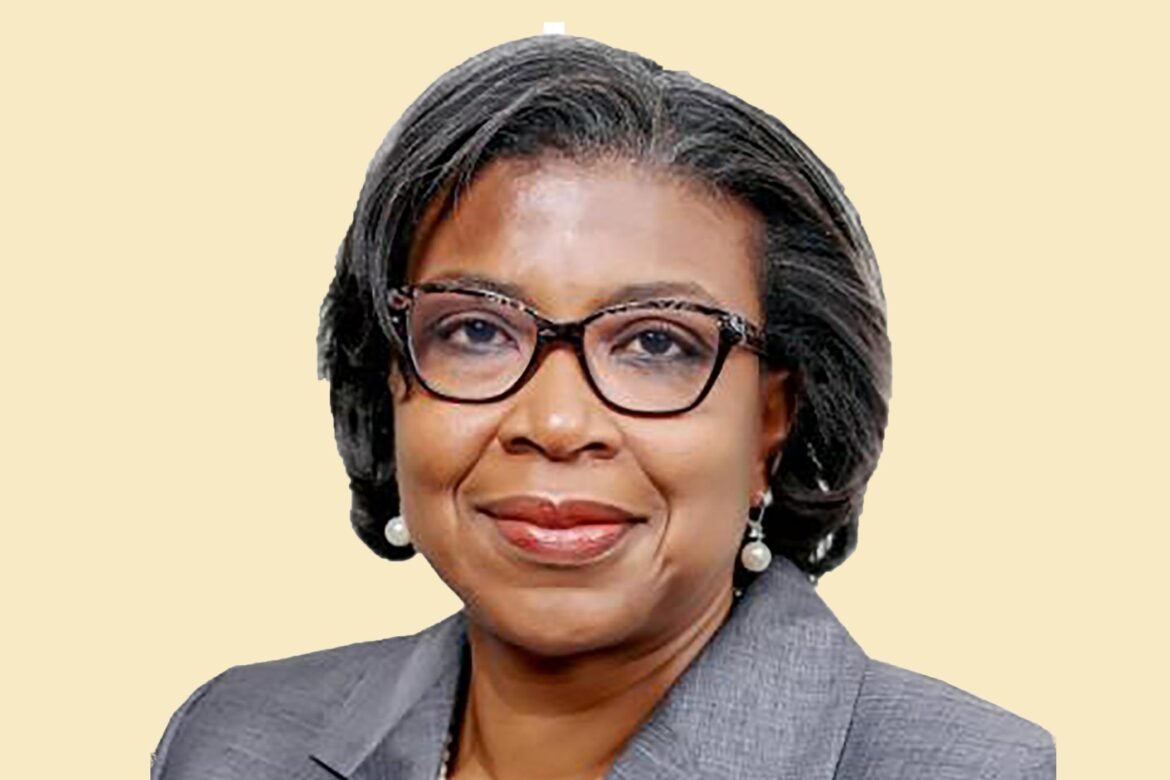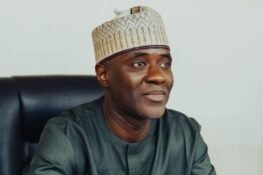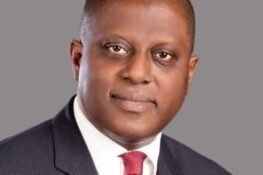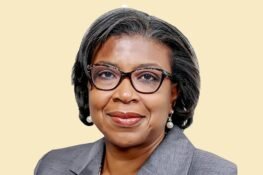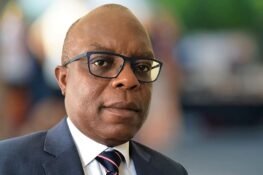The Director General of the Debt Management Office, Patience Oniha, explains that Nigeria’s growing public debt is not out of control. The government she says, has twice borrowed externally – in November 2017 and February 2018 – to offset high interest domestic debts. Oniha believes GDP growth and job creation will soon reduce the debt service to revenue ratio:
President Muhammadu Buhari’s government has been borrowing with hopes that it can increase the ratio of tax-generated revenue as against oil revenues in funding the budget. The numbers have remained relatively stagnant. What exactly is the challenge?
Generating revenue to promote economic growth has been a target of government and remains the case.
For this purpose, revenue generating agencies of government such as the Federal Inland Revenue Service and the Nigeria Customs Service, among others, have been implementing measures aimed at boosting revenues.
Indeed, actual revenues are improving compared with previous years and are therefore not stagnant.
The Honourable Minister of Finance also introduced a Strategic Revenue Growth Initiative recently to further boost government revenue.
Regarding borrowing, government, including those prior to the administration of President Buhari, have borrowed to finance budget deficits and other projects and activities of government.
In the case of borrowing by the present administration and its purposes (to improve infrastructure, create jobs and stimulate economic growth), they are clearly indicated in the Economic Recovery and Growth Plan.
The 2019 draft Federal budget provides for total new borrowing of N1.649.65 trillion, 50 per cent of which will be raised from the domestic market and the balance from external sources
Your office has put the country’s debt profile at N24trn with 68 per cent being domestic debt. How much of this is due to accrued interest on loans in the domestic market?
Nigeria’s total public debt portfolio as at December 31, 2018 as correctly put by you is about N24trn, with domestic debt representing about 68 per cent.
In response to the question on how much of it is due to accrued interest on loans in the domestic market, please note that the N24trn does not include interest on either the domestic or external debt.
The federal governmnt services its debts (principal repayment and interest) as and when due. Note also that the total of N24trn public debt portfolio as at December 31, 2018 comprises the total external and domestic debt of the federal government, the 36 states and the Federal Capital Territory.
You said borrowing for 2019 would be 50 per cent domestic. How cost effective is this considering local interest rates to close to 10 times the international average? Won’t it cost less to borrow 90 per cent internationally?
The 2019 draft Federal budget provides for total new borrowing of N1.649.65 trillion, 50 per cent of which will be raised from the domestic market and the balance from external sources.
Whilst international interest rates are lower than the prevailing domestic interest rates, which perhaps informed your question, proper planning requires that the government should project its level of external borrowing taking into account available funding lines from external sources such as multilateral and bilateral lenders.
Nigeria has a debt stock that is the outcome of successive borrowing by previous administrations for various reasons, principal of which is to finance budget deficits
For three consecutive budget cycles, a third of the budget has been spent on debt servicing. How sustainable is this in the long run? And do you foresee a day when 50 per cent of the budget will have to be spent on servicing debt, especially with the rate domestic debt is growing?
Nigeria has a debt stock that is the outcome of successive borrowing by previous administrations for various reasons, principal of which is to finance budget deficits.
The debt service amount is the consequence of these borrowings. Debt service as a share of actual revenue has grown in recent times due to the sharp drop in the government’s revenues.
Revenues declined significantly due to the crash in crude oil prices and reduction in domestic crude oil production. While crude oil prices have not attained their pre-2015 levels of over USD100 per barrel, production has increased.
This, coupled with the initiatives and efforts by the government to increase non-oil revenues, should result in a decrease over time of the debt service to revenue ratio.
The rate of growth of the domestic debt stock has slowed down since the implementation of the debt management strategy, which seeks to limit the share of domestic debt in the debt stock to a maximum of 60 per cent.
The likelihood of half of the budget being used to service debt may not arise in the future.
This is because with GDP Growth, and job creation becoming more productive due to government’s massive investment in infrastructure, this, as well as the expected increase in revenues will reduce the debt service to revenue ratio.
There are conflicting figures on exactly how much the Buhari government has borrowed and how much debt it inherited from the previous government. Added to that is how much has been paid back or used to service loans since 2015. Does your office have the correct figures?
The actual figures of the public debt stock at the time the present government took over (using the nearest quarter end – June 30, 2015) and the most recent figures (December 31, 2018) are available on the DMO’s website www.dmo.gov.ng.
The debt service figures are also available on the DMO’s website and reported in the DMO’s Annual Report. The DMO is mandated under the DMO Act 2003 to maintain the data on public debt and therefore has the correct figures.
The rate of growth of the domestic debt stock has slowed down since the implementation of the debt management strategy, which seeks to limit the share of domestic debt in the debt stock to a maximum of 60 per cent
Will it make any difference to the rising debt if loans from international lenders are used to offset high interest debts with local banks?
The federal government does not have loans or “high interest debts” with local banks.
If loans from “International Lenders” are used to offset relatively high interest rate domestic debt, it would not translate to a reduction in the debt stock. However, it would have the following benefits:
i. Reduce the debt service costs due to the lower cost of external borrowing.
ii. Elongate the tenor of the FGN’s debt portfolio as longer tenors are available from external sources.
iii. Reduce the share of domestic debt in the total public debt which is a target (maximum of 60%) in the debt management strategy.
Indeed, external borrowing has been used previously to offset domestic debt. In November 2017 and February 2018, the FGN raised USD500m and USD2.5bn respectively, (making a total of USD3 billion), to refinance (offset) high interest domestic debt.
The proceeds of the USD3 billion was used to repay a total of N976.903 billion of Nigerian Treasury Bills in 2017 and 2018.
On several occasions, Nigeria has renegotiated loans from the IMF that had grown to unsustainable levels. Does that option exist with local banks?
The statement that “On several occasions, Nigeria has renegotiated loans from the IMF that had grown to unsustainable levels” is completely false and Nigeria does not have any loans from the IMF.
A re-negotiation of loans with local banks does not arise as the Federal Government does not have loans from local banks.
In the domestic market, the Federal Government raises funds through the issuance of securities (FGN Bonds, Sukuk, etc.) which are structured products (not loans) with pre-specified interest rates, interest payment dates, and maturity dates.
The securities are bought by a diverse group of investors such as Pension Funds, Fund/Asset Managers, Insurance Companies and banks amongst others.
To ensure that Total Public Debt portfolio remains sustainable at all times, the DMO, in collaboration with relevant MDAs, conducts the Debt Sustainability Analysis (DSA) on an annual basis to evaluate the country’s debt carrying capacity in terms of its ability to meet current and future debt obligations
At what point would your office advise the government that its debts are no longer sustainable and it has to stop borrowing?
Borrowing is done systematically by government and not haphazardly. The process commences with the preparation of the Appropriation Bill by the Executive and this provides the size of the fiscal deficit.
The level of the deficit informs the level of new borrowing.
To ensure that Total Public Debt portfolio remains sustainable at all times, the DMO, in collaboration with relevant MDAs, conducts the Debt Sustainability Analysis (DSA) on an annual basis to evaluate the country’s debt carrying capacity in terms of its ability to meet current and future debt obligations.
The DSA thus provides an indication or a guide to when there is a likely risk of a Debt Distress and the Government, on the basis of the DSA Outcome, determines the level of new borrowing.
Also, note that based on the provisions of the Fiscal Responsibility Act 2007, the Executive on its own cannot borrow even after deciding on the level of new borrowing based on the recommendation of the DMO.
All new borrowings must be approved by the National Assembly.
